Draycott & Wilne - Part 06 - Into Church Wilne
w/e 13 January 2013
All this week's pictures were taken
with a Kodak DX6490
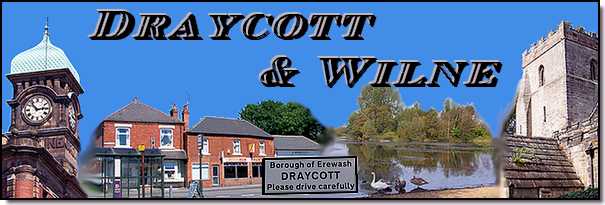
After our walk through Draycott our Village Trail
now takes us to Wilne. Wilne is actually two distinct settlements
with a cluster of properties south of the River Derwent being
known as Great Wilne with the lane from Draycott leading to an
area north of the river called Church Wilne.
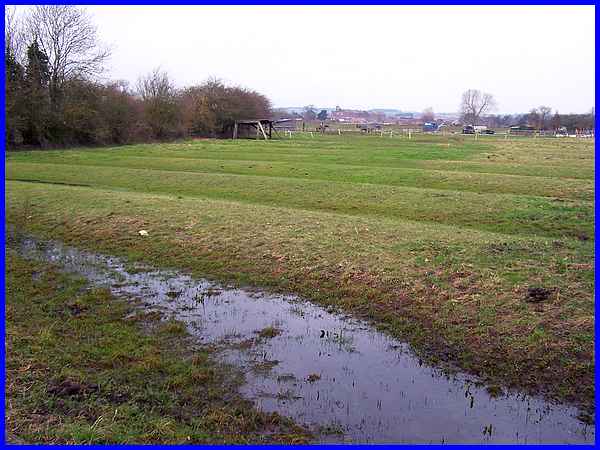
A feature of the landscape as we travel along the lane between
Draycott and Church Wilne (below right) is the distinctive ridge
and furrow of medieval times that can be seen in many of the
fields.
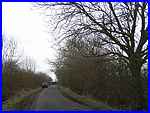 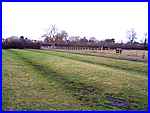 Near
The Boathouse at Draycott (left) some of the furrows looked quite
damp and nearer Church Wilne they were filled with water (above).
In fact in some of the fields even the ridges were under water.
It is for this reason that the inhabitants of Wilne gradually
moved to the higher ground at the "Dry Cote" to the
north. "Wilne" actually means "a clearing in the
willows". Near
The Boathouse at Draycott (left) some of the furrows looked quite
damp and nearer Church Wilne they were filled with water (above).
In fact in some of the fields even the ridges were under water.
It is for this reason that the inhabitants of Wilne gradually
moved to the higher ground at the "Dry Cote" to the
north. "Wilne" actually means "a clearing in the
willows".
|
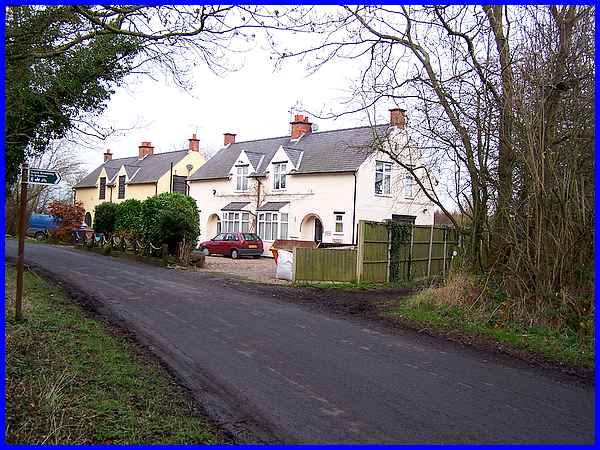
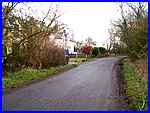 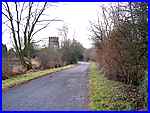 Only
a few buildings now remain at Church Wilne including these cottages
adjacent to the footpath to Breaston known as the Coffin Walk*.
The narrow lane between Draycott and Church Wilne meanders like
the river but on a different route, for about three quarters
of a mile and shortly after passing the cottages (left and above)
soon reaches the church of St Chad's (right). Only
a few buildings now remain at Church Wilne including these cottages
adjacent to the footpath to Breaston known as the Coffin Walk*.
The narrow lane between Draycott and Church Wilne meanders like
the river but on a different route, for about three quarters
of a mile and shortly after passing the cottages (left and above)
soon reaches the church of St Chad's (right).
* Note: The Coffin Walk that we followed in the Country Walks
section of this site is a circular walk from Breaston around
the outskirts of Draycott and takes its name from a path from
the "Chapel of Ease" in Breaston where only mass could
be said to St Chad's Church in Wilne where weddings, funerals
and other services were conducted. The coffins had to be carried
across the fields and accessed the lane from Draycott at the
side of the cottages pictured above.
|
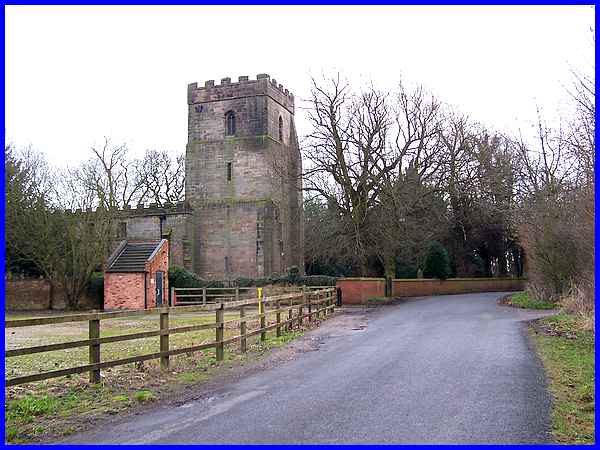
The church is dedicated to St Chad who died in 672AD and although
dating from the early thirteenth century it had features added
in later centuries including a chapel in about 1622 and it was
sympathetically restored between 1917 and 1923 following a fire
on March 7th 1917. It has been suggested that the fire was started
by Suffragettes but this has never been proved.
|
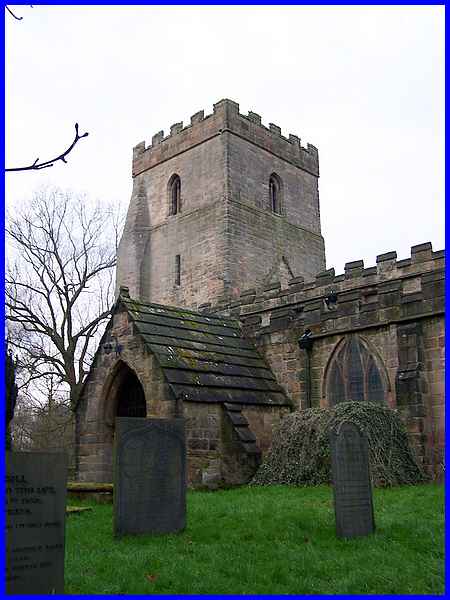
The south porch entrance to the church is worthy of note and
closer inspection as it has an excellent vaulted roof and a finely
pointed arched doorway. On the east side of the tower evidence
of the ridge line of an earlier roof over the nave is still visible.
|
Regular services are still held in St Chad's but
the church is normally kept locked. A Village Trail leaflet advises
that a key is available from a local butcher (who I think is
in Breaston) but as the leaflet was printed in 1997 whether that
still holds true I have not tested. The following images on this
page therefore of the interior of St Chad's were captured on
one of the walks in Week Two of the 2008 Autumn Footprints programme.
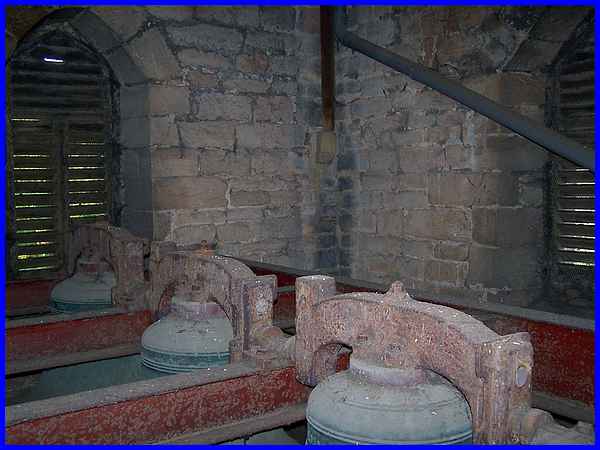
During that visit in 2008 I was able to climb the staircase to
the tower which contains four bells. The tower is a three stage
affair and each stage is slightly smaller than the one below.
The lower stages are from the thirteenth century but the top
one is a fifteenth century addition.
|
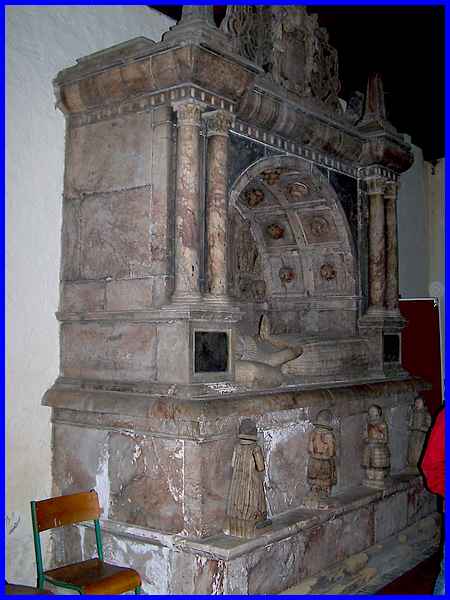
 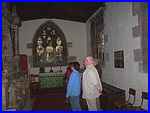 The pulpit and the pews in the nave
(left) are all part of the 1923 restoration by Currey and Thompson
in the Arts and Crafts style but in the south aisle is the Willoughby
Chapel (right) which was built in 1622 and is decorated with
a Flemish mosaic tiled floor. The chapel erected to the memory
of Sir John and Lady Frances Willoughby of Risley by their son
Henry (b 1579) also contains an alabaster memorial (above) showing
his parents lying side by side. The pulpit and the pews in the nave
(left) are all part of the 1923 restoration by Currey and Thompson
in the Arts and Crafts style but in the south aisle is the Willoughby
Chapel (right) which was built in 1622 and is decorated with
a Flemish mosaic tiled floor. The chapel erected to the memory
of Sir John and Lady Frances Willoughby of Risley by their son
Henry (b 1579) also contains an alabaster memorial (above) showing
his parents lying side by side.
|
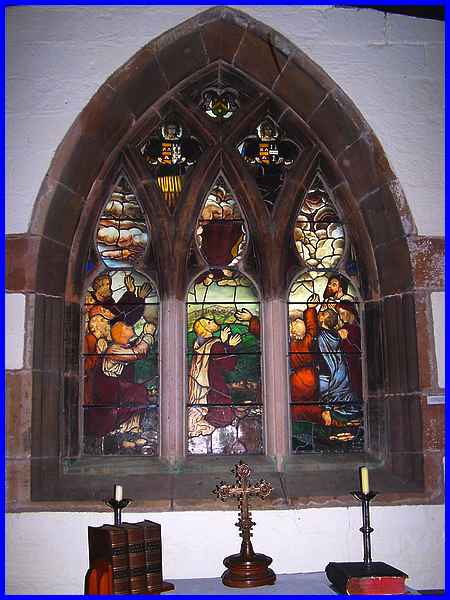
Three stained glass windows in the Willoughby Chapel are worth
closer inspection as, like the tiled floor, they are also of
Flemish origin and the strongly coloured glass is probably the
work of the Van Linges, fine exponents of the art most notably
between the 1620s and the 1640s.
|
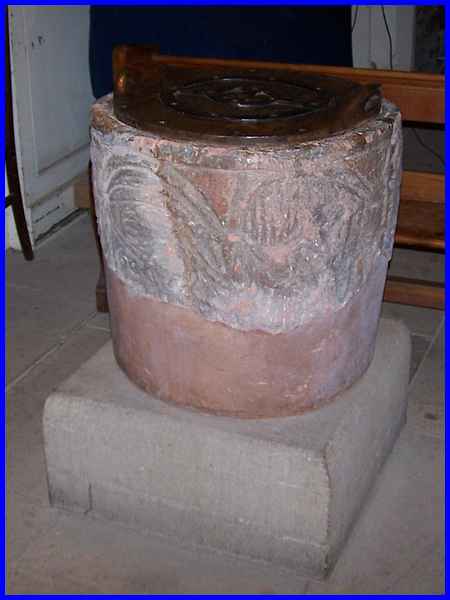
Among the other interesting features of St Chad's is the font
which was formerly part of a Saxon preaching cross. The cross
is now upside down to make it usable as a font but distinctive
patterns of the period such as birds representing the four gospel
writers can still be made out.
|

